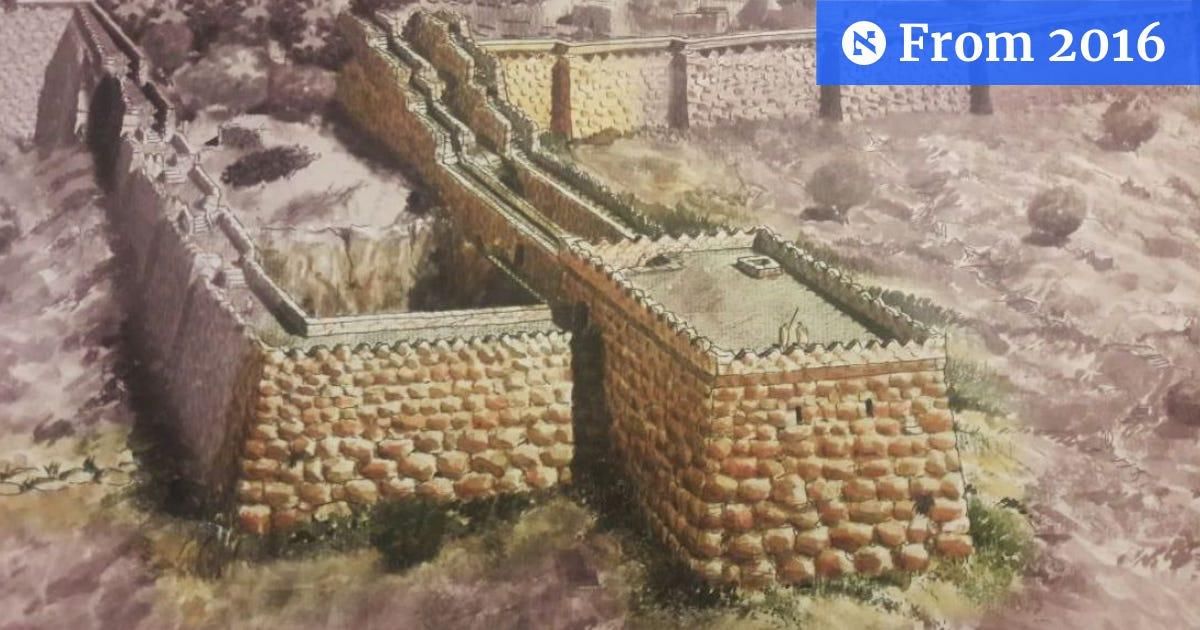Recent archaeological excavations in the City of David, Jerusalem, have yielded remarkable discoveries that may alter our understanding of the city’s historical defenses and biblical significance. Researchers from the Israel Antiquities Authority and Tel Aviv University have unearthed a massive fortification system, including a moat, which they believe dates back to the time of King David and the Kingdom of Judah. This significant finding comes after over 150 years of speculation regarding the ancient city’s fortifications and their layout.
The newly discovered moat spans approximately 70 meters in length and was initially believed to be a natural depression. However, upon further excavation and analysis, scholars determined that it was indeed a man-made trench designed as a defensive feature. Dr. Yiftach Shalev, one of the excavation directors, stated, “The discovery of this moat sheds light on the importance of water barriers in the ancient defense systems and helps us redefine our understanding of Jerusalem’s fortifications during biblical times.”
This trench divided the southern residential areas of Jerusalem from the northern upper city, which housed the palace and the temple. Researchers suggest that the moat’s construction would have showcased the power and engineering capabilities of the rulers at the time, impressing visitors and ensuring the city’s protection.
“This is a dramatic discovery that opens up a renewed discussion about the terms from biblical literature that refer to the topography of Jerusalem, such as the Ophel and the Millo,” Prof. Yuval Gadot explained, referring to the biblical accounts that describe the layout of ancient Jerusalem. The terms refer to key geographical regions within the city, with the Ophel being the area between the City of David and the Temple Mount to its north.
The findings have sparked interest among historians and archaeologists who have been piecing together the connections between archaeological evidence and biblical narratives. Professor Gadot highlighted the importance of integrating archaeological data with historical texts, stating, “Once again, discoveries are being revealed that shed new and vivid light on the biblical literature.”
The excavation site, previously a parking lot, has now become a focal point for ongoing investigation of Jerusalem’s ancient urban landscape. The team has uncovered not only the moat but also remnants of structures believed to be part of the larger fortification system that would have protected the ancient city from various threats over centuries.
Certainly, this excavation is not only a testament to the engineering prowess of ancient Jerusalemite rulers but also highlights the continual unearthing of evidence that challenges pre-existing notions about the city’s historical geography.
However, much remains unknown about the exact dates when these structures were built. Various archaeological dating methods suggest that significant construction in this area may date back to the Middle Bronze Age, around 3,800 years ago. If the moat corresponds with this timeline, it would provide a clearer context for understanding the city’s defenses against ancient armies.
In a broader context, the discoveries contribute to an ongoing narrative about Jerusalem’s historical significance and its multifaceted past. As archaeologists delve deeper into the structures that have long been buried, they provide insight not only into the architectural achievements of the time but also the sociopolitical dynamics of ancient Jerusalem, a city that has held religious significance for thousands of years.
In accordance with the mission of the Israel Antiquities Authority, the excavation results will be presented at the upcoming “Jerusalem Studies Experience” conference, where scholars will share insights and further discuss these findings with a wider audience.
As researchers continue to analyze the implications of these findings, they hope to provide a comprehensive narrative of Jerusalem that harmonizes archaeological evidence with the rich tapestry of biblical narratives. Dr. Shalev expressed optimism about the ongoing projects, noting, “We are confident that this will create a clear picture of how the ancient city functioned, both socially and politically.”
The discovery of the moat and its associated structures also raises questions about the evolution of urban planning and fortifications within Jerusalem. As the city expanded and adapted to various threats throughout history, innovations in defense were essential for the survival of its inhabitants.
The excavation team is keen to continue their work in this historically rich area, emphasizing the importance of ongoing archaeological efforts in changing how Jerusalem is perceived both by scholars and the public. The findings highlighted in these recent excavations will surely spark further interest in Jerusalem’s past and the narratives that have emerged from its ancient stones.
Overall, this revelation stands as a significant turning point in our understanding of biblical Jerusalem, showcasing the complexity of its construction, defense systems, and the narrative trails interwoven throughout its rich history. The old adage, “the truth is stranger than fiction,” rings especially true in a city whose history is alive and evolving with each dig. Researchers continue to lift the veil on thousands of years of history, taking us further along the winding roads of Jerusalem’s mysterious past. Its continuous unearthing is a reminder of the city’s everlasting nature and ensures that the chronicles of Jerusalem are far from complete.




